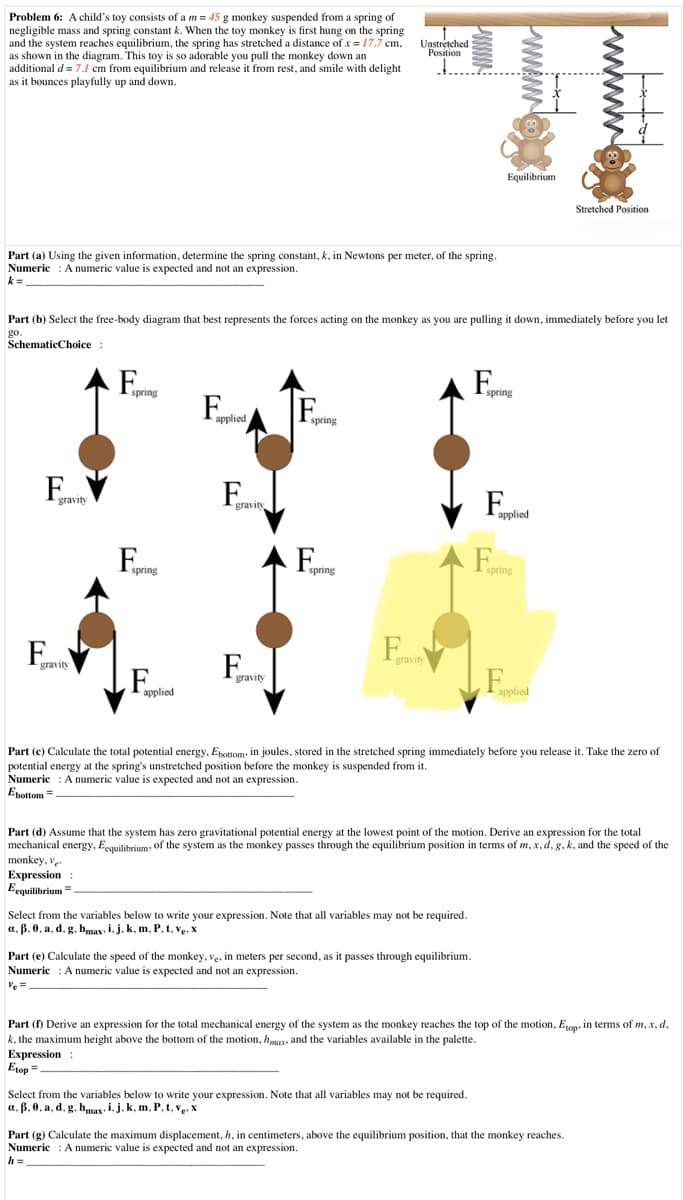A child's toy consists of a m = 45 g monkey suspended from a spring of ss and spring constant k. When the toy monkey is first hung on the sprin m reaches equilibrium, the spring has stretched a distance of x= 17.7 cm he diagram. This toy is so adorable you pull the monkey down an 7.1 cm from equilibrium and release it from rest, and smile with deligh playfully up and down.
Simple harmonic motion
Simple harmonic motion is a type of periodic motion in which an object undergoes oscillatory motion. The restoring force exerted by the object exhibiting SHM is proportional to the displacement from the equilibrium position. The force is directed towards the mean position. We see many examples of SHM around us, common ones are the motion of a pendulum, spring and vibration of strings in musical instruments, and so on.
Simple Pendulum
A simple pendulum comprises a heavy mass (called bob) attached to one end of the weightless and flexible string.
Oscillation
In Physics, oscillation means a repetitive motion that happens in a variation with respect to time. There is usually a central value, where the object would be at rest. Additionally, there are two or more positions between which the repetitive motion takes place. In mathematics, oscillations can also be described as vibrations. The most common examples of oscillation that is seen in daily lives include the alternating current (AC) or the motion of a moving pendulum.
Conservation and energy Q6: please answer parts a, c, and d. Please explain reasoning for all steps even if minor. Part b is answered as shown.

Trending now
This is a popular solution!
Step by step
Solved in 4 steps with 1 images









